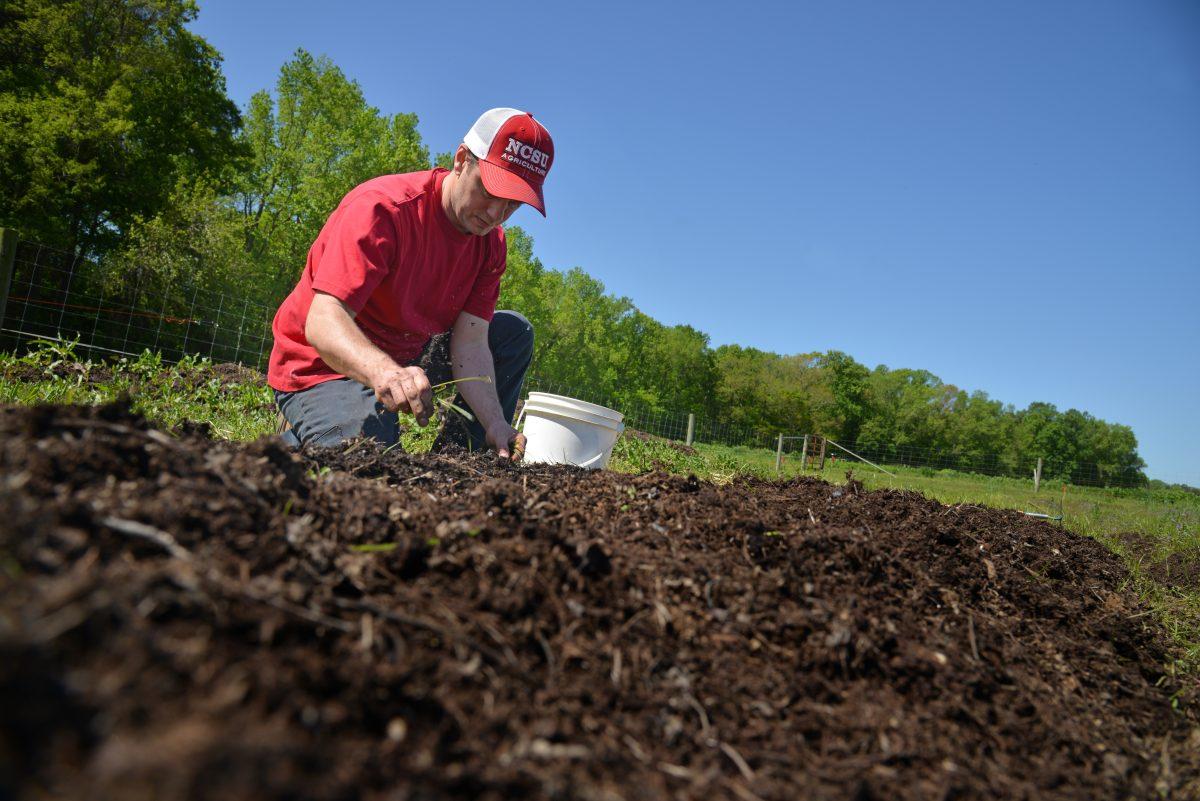Located about 10 minutes from campus off Lake Wheeler Road, the Agroecology Education Farm is the main place for a variety of students to gain a hands-on education and experiences in sustainable and organic horticulture production.
Agroecology is the study of ecological process that can be applied to sustainable agriculture. In recent years the Agroecology Farm and NC State Dining have partnered to put fresh and local produce in NC State dining halls.
According to Michelle Schroeder-Moreno, the director of the Agroecology Education Farm, the farm is not certified organic. However, the farm strictly follows and adopts organic practices.
“We practice organic rules and follow them, but one thing that I think it is important with an organic certification is to not jump into it,” Schroeder-Moreno said. “It is very important to learn your land and understand what you can grow. We would like to get our organic certification, but that is in our future.”
Alison Reeves, the Agroecology Education Farm manager, explains that to become and act as an organic farm, the farm must follow a certain set of rules that are enforced by the U.S. Department of Agriculture (USDA).
“Before, the term “organic” was used, the USDA used the general term ‘sustainable,’ which could mean a lot of things to a lot of different people,” Reeves said. “The organic certification is a way to really level that playing field, so consumers know that organic farmers are following these rules.”
According to Reeves, an organic farm cannot have any synthetic inputs meaning all fertilizers, seeds, pesticides and herbicides used must be derived from nature. In addition, the soil quality must either be maintained or improved when checked by a certifying agent.
Schroeder-Moreno added that an organic farm cannot have any genetically modified organisms or sewage sludge present
Following organic farming practices, the Agroecology Education Farm uses a method called “Integrated Pest Management” to handle and control its pests, Reeves added. This method can be seen in a triangle shape; at the bottom of the triangle is prevention, which involves developing methods to avoid the pest crops. At the top of the triangle is chemical control.
“We are really trying to stay in the bottom of the triangle,” Reeves said. “For example, we have a squash vine borer, which is a pest for most summer squash like yellow squash and zucchini. To avoid this pest, we plant the squash early and late when the pest isn’t as big as a problem. We typically avoid growing squash in the summertime when a lot of people are growing these types of crops, since it’s cheap for the dining halls to obtain and harder for us to grow.”
In addition, the farm has a very bad caterpillar problem, according to Reeves. The caterpillars typically affect their tomatoes and greens.
“The caterpillars can be a really big pest,” Reeves said. “To get rid of them, we will do things like plant habitat, which are tiny flowers for wasps. The wasps are parasitoids, so the wasps will lay their eggs in the caterpillars and as the eggs hatch, they kill the caterpillar. We plant habitat to encourage the wasp to be around.”
However, Reeves states that the farm uses Bt, a biological pesticide that produces proteins that are toxic to some insects when eaten. The proteins are not toxic to humans.
“Bt does not have a long life and is really targeted toward soft bodied insects, like caterpillars.” Reeves said. “This is actually the only chemical we use on the farm.”
Before a farm can get organic certified, a farm has to be keeping records for three years. Currently, the farm is getting all of their records in place so they can show all of their organic practices when they choose to apply for an organic certification, Schroeder-Moreno stated.
“Being an organic farm and having organic practices is important, because the consumer knows that these rules have been followed and that their produce was handled with care,” Schroeder-Moreno said. “There is that quality and control behind it, even though the consumer may not know all the specific things that go on.”








